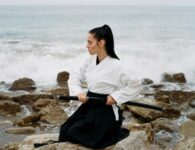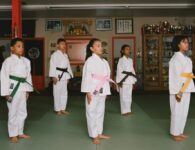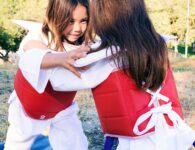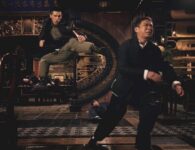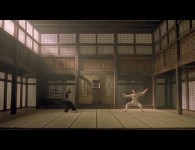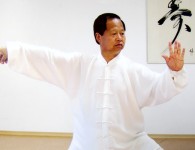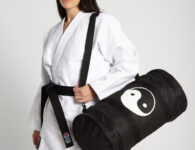If you’re reading this martial arts blog on Asian World of Martial Arts, chances are that martial arts is your favorite physical activity.We love martial arts. We breathe martial arts. We probably spend the bulk of our active time training, practicing, and maybe even competing.
As a result, we don’t always have the time or energy for other kinds of exercise. Which can be understandable – why spend any time on something else when you could be doing more martial arts? – but it can also expose holes in our technique, and potentially leave us more susceptible to injury.
Any good athlete will tell you that participating in a sport or method other than your own can have huge benefits for your primary practice. Taking up another activity or two can help to keep you healthy, strong, and ready for your next training session. It can even make you a better martial artist.
With that in mind, let’s take a look at the benefits that some popular types of exercise can have for the martial artist interested in cross-training.
Running
Whether you prefer the kind of high intensity interval training (like sprints) that’s currently popular in most western training, or the traditional steady state middle and long-distance road work of arts like Muay Thai, running can play a pivotal role in preparing your body for martial arts. Beyond the obvious improvement to the cardiovascular system that comes with a regular and responsible routine, running can also help your body prepare for both the demands and strain of martial arts practice by helping to develop the muscles in your legs, hips, and back and making your joints and ligaments stronger. Citing the work of James Fries, M.D., a professor of medicine at Stanford University School of Medicine, Lori O’Connell of Pacific Wave Jiu-Jitsu writes that physical activity can keep your cartilage healthy and “running also specifically strengthens the ligaments that help support joints, making them more stable and less susceptible to sprains and strains,which is useful for any martial artist whether you’re doing Jiu-jitsu, Taekwondo, Judo, etc.”
The relationship between martial arts and running isn’t a one-way street, either. Check out this cool article from Competitor for a look at the ways in which the teachings of Bruce Lee can help runners.
Animal Exercises
Kung Fu isn’t the only martial art to find inspiration in the movements of animals. Other martial arts like Brazilian Jiu-Jitsu have been incorporating exercises like bear walks and even ducks walks into their warm-ups for quite a while now. And the rest of the world is starting to catch on with programs like Animal Flow and Ginastica Natural, which incorporate those moves with touches of yoga, gymnastics, and bodyweight training to create entire animal-inspired functional workouts. These workouts are great for almost any fitness buff because they offer a fun, new alternative to more traditional strength and cardio training, which can help keep you motivated when you’re starting to feel like your regular training might becoming a bit too repetitive. And they’re especially excellent for martial artists, because the full body movement patterns involved are similar enough that they’re going to be pretty easy and fun to pick up for anyone with a grappling or striking background while still different enough to challenge and improve your flexibility, strength, and endurance in fresh ways.
https://youtu.be/cLYZ-3beDeI
Yoga
By now, we probably all know that yoga is great for flexibility, and that’s great for martial arts, but the benefits don’t stop there. A good yoga practice can also help to develop your focus, discipline, core strength, endurance, and balance. According to Mike Yap, a mixed martial arts practitioner turned yogi, it can also help you recover from injuries, which is a huge benefit for any martial artist given the demands and risk involved in most training. “Yoga can reduce your recover time after being injured,” he writes for Mind Body Green. “Performing yoga asanas after a mixed martial arts class will help relax the muscles. Yoga will help to teach athletes how to use their muscles in a more controlled manner as well, thus preventing a lot of common martial arts injuries. Many yoga poses are designed to have healing benefits, so by doing these poses you can recover from the numerous aches and pains that often accompany martial arts.”
Yoga expert and martial arts enthusiast Kathryn Budig even put together a workout that combines her two passions for Yoga Journal if you’re looking to add a little kick – literally – to your practice.
If yoga just isn’t your thing but you’re still interested in increasing your flexibility, you can always check out the ProForce Stretchmaster.
Pilates
Pilates focuses on building core strength and developing better posture and body awareness, all of which can help to make you a better and a healthier martial artist. “I have been studying karate since 1985 and unfortunately was prone to injuries especially in both hamstrings and in my left shoulder,” Amelia Sheftall, a Pilates instructor, writes for Fighting Arts. “It wasn’t until I started training in bodywork, both in Pilates and Gyrotonic Movement (a system of yoga-like moving exercises performed on a specialized machine), that I started to understand why. I was not holding my body (muscles and bones) in proper alignment and as a result I suffered self-inflicted injuries due to repetitive movements while using improper posture. Improper posture is usually caused by certain muscles being too strong and tight while other muscles are too loose and weak. This is a problem that can be corrected with a regular Pilates practice and is a tried and true method of exercise used by both professional and amateur athletes alike.”
Sheftall also points out that Joseph Pilates worked with boxers when he was developing the Pilates method, which makes a lot of the moves particularly beneficial for the martial arts population.
Weight Training
There’s a school of thought that weightlifting is counterproductive for martial artists because adding bulk might slow down your performance, but there’s so much more to strength training than building bulk. A good weight program, designed with a martial artist’s goals and needs in mind, can improve your explosive strength, which in turn will improve your martial arts performance. Much like Pilates, it can also help to identify and correct improper technique that might be leading to injuries in your training.
Bruce Lee was a firm believer in the importance of this kind of work for martial artists. “Unlike many in the ‘70s who believed that weight training would make you muscle-bound and slow, Bruce saw the benefits of weight training after a period of doing just reverse curls to develop his forearms,” Andrew Read explains in the Breaking Muscle article “4 Training Lessons We Can Learn From Bruce Lee.” His routine, which focused on functional full-body moves like clean and presses, squats, and good mornings, is still popular and effective today.
Do you cross-train? What’s your favorite type of exercise… other than martial arts? Let us know in the comments! And check out our selection of training and exercise equipment for all of your fitness needs.








